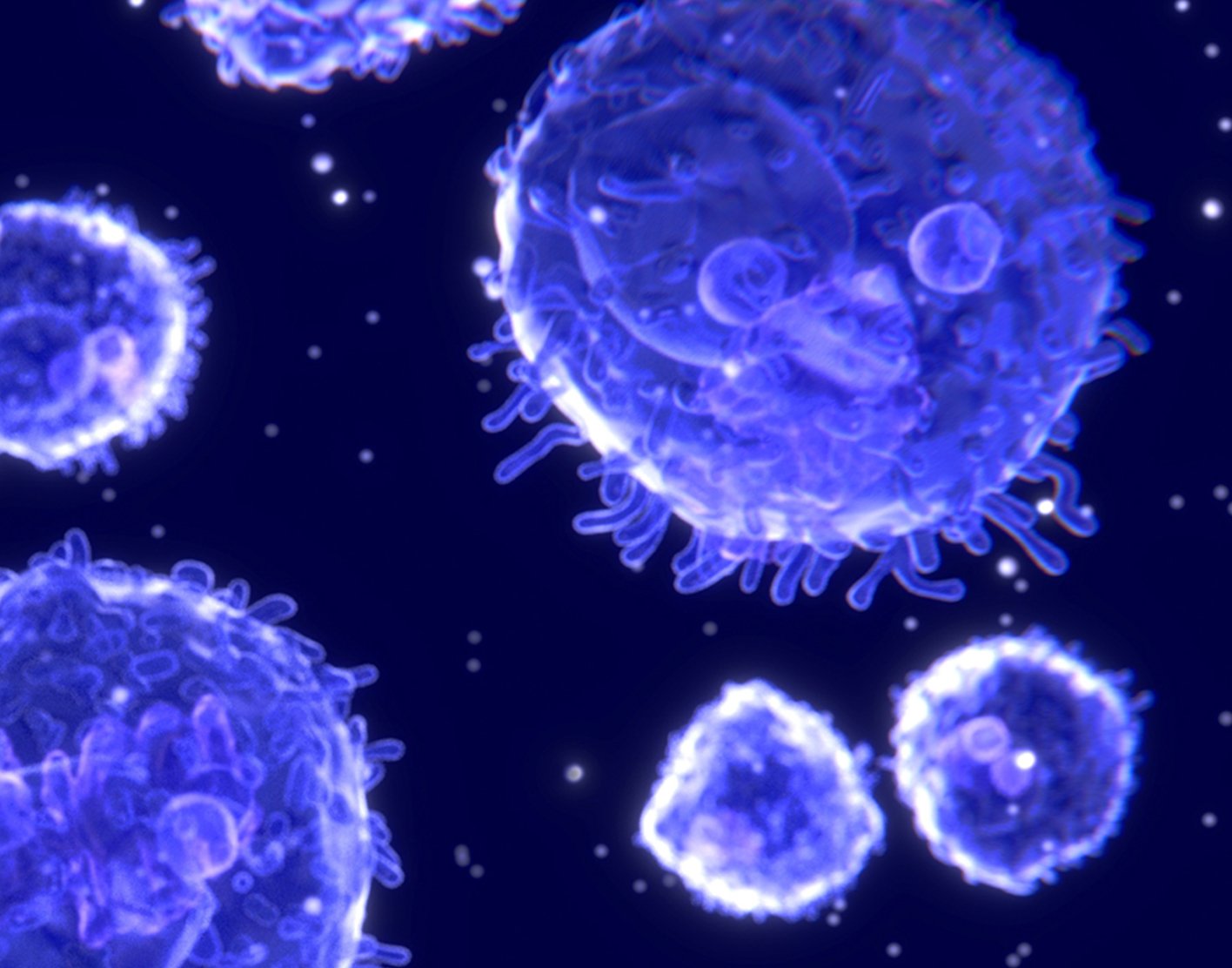
B and T cell screen
Definition
B and T cell screen is a laboratory test to determine the amount of B and T lymphocytes in the blood.
Alternative Names
E-rosetting; T and B lymphocyte assays; B and T lymphocyte assays
How the Test is Performed
A
Blood could also be obtained by
After the blood is drawn, it goes through a two-step process. First, the lymphocytes are separated from other blood parts. Once the cells are separated, identifiers are added to distinguish between T and B cells.
How to Prepare for the Test
Tell your health care provider if you have had any of the following, which might affect your T and B cell count:
Chemotherapy HIV/AIDS Radiation therapy - Recent or current infection
- Steroid therapy
Stress - Surgery
How the Test will Feel
When the needle is inserted to draw blood, some people feel moderate pain, while others feel only a prick or stinging sensation. Afterward, there may be some throbbing.
Why the Test is Performed
Your provider may order this test if you have signs of certain diseases that weaken the immune system. It may also be used to distinguish between cancerous and noncancerous disease, particularly cancers that involve the blood and bone marrow.
The test may also be used to determine how well treatment for certain conditions is working.
Normal Results
Normal value ranges may vary slightly among different laboratories. Some labs use different measurements or test different samples. Talk to your provider about the meaning of your specific test results.
What Abnormal Results Mean
Abnormal B and T cell counts may suggest a possible disease. Further testing is needed to confirm a diagnosis.
An increased T cell count may be due to:
- Cancer of white blood cells called lymphoblasts (
acute lymphoblastic leukemia ) - Cancer of white blood cells called lymphocytes (
chronic lymphocytic leukemia ) - A viral infection called
infectious mononucleosis - Blood cancer that starts in the plasma cells in the bone marrow (
multiple myeloma ) - Syphilis, a sexually transmitted disease (STD)
- Toxoplasmosis, an infection due to a parasite
- Tuberculosis
An increased B cell count may be due to:
- Chronic lymphocytic leukemia
- DiGeorge syndrome
- Multiple myeloma
Waldenström macroglobulinemia
A decreased T cell count may be due to:
- Congenital T-cell deficiency disease, such as Nezelof syndrome, DiGeorge syndrome, or Wiskott-Aldrich syndrome
- Acquired T-cell deficiency states, such as HIV infection or HTLV-1 infection
- B cell proliferative disorders, such as chronic lymphocytic leukemia or Waldenström macroglobulinemia
A decreased B cell count may be due to:
HIV/AIDS - Acute lymphoblastic leukemia
Immunodeficiency disorders - Treatment with certain medicines
Risks
Veins and arteries vary in size from one person to another and from one side of the body to the other. Obtaining a blood sample from some people may be more difficult than from others.
Other risks associated with having blood drawn are slight but may include:
- Excessive bleeding
- Fainting or feeling lightheaded
- Hematoma (blood accumulating under the skin)
- Infection (a slight risk any time the skin is broken)
References
Liebman HA, Tulpule A. Hematologic manifestations of HIV/AIDS. In: Hoffman R, Benz EJ, Silberstein LE, et al, eds. Hematology: Basic Principles and Practice. 7th ed. Philadelphia, PA: Elsevier; 2018:chap 157.
Riley RS, Mageau R, Ben-Ezra J. Laboratory evaluation of the cellular immune system. In: McPherson RA, Pincus MR, eds. Henry's Clinical Diagnosis and Management by Laboratory Methods. 24th ed. Philadelphia, PA: Elsevier; 2022:chap 46.
Review Date: 04/12/2022
The information provided herein should not be used during any medical emergency or for the diagnosis or treatment of any medical condition. A licensed physician should be consulted for diagnosis and treatment of any and all medical conditions. Call 911 for all medical emergencies. Links to other sites are provided for information only -- they do not constitute endorsements of those other sites. Copyright ©2019 A.D.A.M., Inc., as modified by University of California San Francisco. Any duplication or distribution of the information contained herein is strictly prohibited.
Information developed by A.D.A.M., Inc. regarding tests and test results may not directly correspond with information provided by UCSF Health. Please discuss with your doctor any questions or concerns you may have.



























